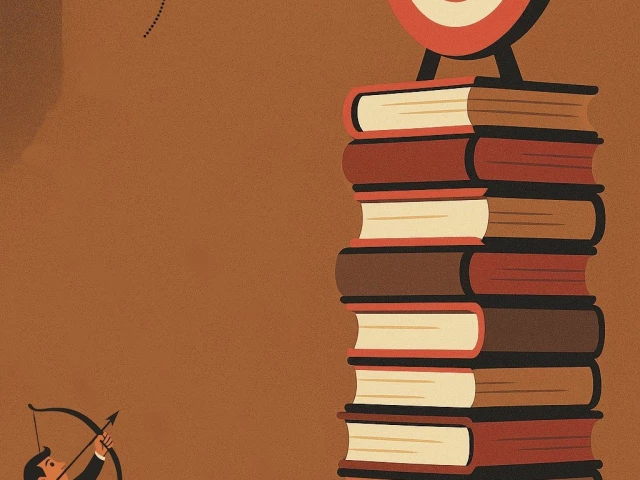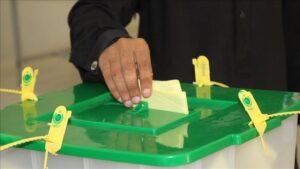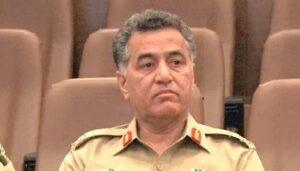Islamabad:
Pakistan was lost by little the objective of the International Monetary Fund (IMF) to spend at least RS2.86 billion in improving poor health and education standards, since Sindh, Khyber-Pakhtunkhwa (KP) and Punjab did not achieve their commitments.
The education spending seemed to be a low priority, despite the fact that one in four children was out of school and half of the five grade students could not read Urdu’s stories of grade two.
Against the objective of RS2,863 billion, federal and four provincial governments spent RS2.84 billion in the last fiscal year, losing the brand for RS27 billion, according to government sources.
In comparison with the objectives in the Memorandas of Understanding (MOU) signed by the five governments, the expenses were RS240 billion lower than the commitments. Sindh, Khyber-Pakhtunkhwa and Punjab lost their goals for broad margins, while federal governments and Baluchistan exceeded their own. Bad administrative structures and low absorption capacity were cited as main reasons for the deficit.
The IMF established quarterly and annual roofs to ensure that health spending and education did not sacrifice to meet other conditions, such as cash surpluses and budget balances. In May, the Pakistani authorities assured the IMF that they would work to improve the provincial capacity in these sectors.
The IMF personnel report declared that the health and education of Pakistan has decreased since 2018. All governments have directed a modest increase in 2.4% of GDP spending, but the execution fell short, particularly in Sindh and Khyber-Pakhtunkhwa, due to absorption problems.
The annual objective of the IMF was lost despite a greater expense in the last quarter. Against a quarterly objective of RS713 billion, the five governments spent RS937 billion in April-June, which was almost a third more than planned. However, this late increase could not compensate for the deficits of the first three quarters.
The authorities had recognized the decrease in health and education spending of the non -Benazir Income Support Program (BISP) in recent years and pledged to gradually increase as a proportion of GDP on the three -year IMF program.
Compared to internal budgetary objectives, the Federal Government spent RS261 billion in health and education against an objective of RS248 billion. Punjab fell RS35 billion short, spending RS1.15 billion in total. Provincial Information Minister Azma Bukhari said that Punjab’s health budget was RS524.8 billion, with RS505 billion really spent, 96% of the objective. The education spending was aimed at RS664 billion, but stood at RS649 billion, or 98% of the goal.
Sindh, under the government of the main minister Syed Murad Ali Shah, fell to RS153 billion short, spending RS670 billion against a goal of RS853 billion, said the sources. Provincial governments often favor the large infrastructure projects with more visibility for voters on softer social spending objectives.
Khyber-Pakhtunkhwa spent RS545 billion in health and education compared to the objective of RS600 billion, which is missing at RS55 billion. Baluchistan, however, exceeded its objective at RS25 billion, spending RS206 billion.
A recent World Bank report for the “Actions to strengthen performance for inclusive and receptive education” said Pakistan still fights with equitable access to education, with significant disparities at all levels and genres.
The gross admission ratio in degree one is 91%, with disparities between men and women. The transition rates of primary school to high school are 83%, and from middle to high school, 92%, according to the World Bank. However, the gross registration rate decreases abruptly from 78% to 22% primary level in higher secondary education, which highlights retention problems.
Children outside school are still a great concern, with 26.1 million, or 38% of the school-age population, who do not attend school in 2022-23. Gender disparities worsen in higher education levels, and rural areas are more affected, which represents 74% of children outside the school. For girls, lack of access is a critical barrier.
Despite the progress in registration, the results of the gain remain low, with national evaluations that show a decrease in fundamental literacy and arithmetic (FLN). In 2023, only 50% of the five Five grade students could read a degree-two history in Urdu or Sindhi, below 55% in 2021. English literacy also fell, with only 54% of the five students capable of reading simple sentences, compared to 56% in 2021. Numeral skills also worsened.
World Bank publications on loans from the health sector show an equally worrying image. Although Pakistan has seen improvements in health results during the last decade, it is unlikely to meet most of the sustainable development objectives (SDG) related to 2030 health to the current rhythm.
Life expectancy has improved, but remains among the lowest in southern Asia. Progress in reproductive, maternal and child health is also inappropriate, and Pakistan remains one of the only two countries where polyomyelitis is endemic.




